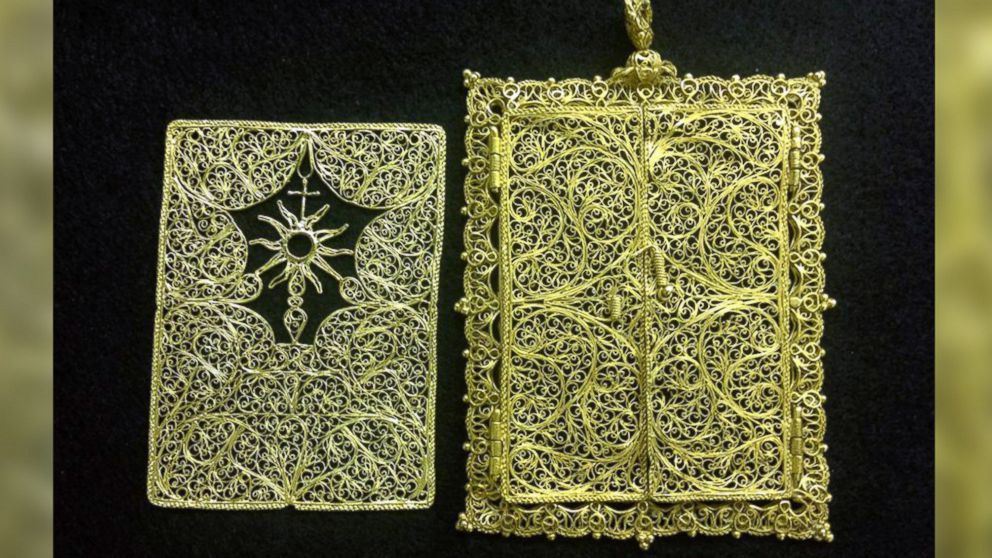 A man from Florida recently discovered a “priceless” religious artifact from the bottom of the Atlantic Ocean, according to ABC News (a video of the discovery is posted on ABC’s article). The sunken treasure was discovered by a 27-year-old professional salvager last month on a scavenging hunt with his family. The treasure was found at the site of a 300-year-old shipwreck off the coast of Ft. Pierce and is the missing piece of a necklace that was discovered at the same site in 1989.
A man from Florida recently discovered a “priceless” religious artifact from the bottom of the Atlantic Ocean, according to ABC News (a video of the discovery is posted on ABC’s article). The sunken treasure was discovered by a 27-year-old professional salvager last month on a scavenging hunt with his family. The treasure was found at the site of a 300-year-old shipwreck off the coast of Ft. Pierce and is the missing piece of a necklace that was discovered at the same site in 1989.
Called a pyx, the ornate gold trinket is a Spanish artifact used by priests to hold the communion host, Brent Brisben, the operations manager of Queen Jewels, said to ABC News.
“We find shipwrecked artifacts on a daily basis, but it’s more like ship spikes and musket balls, so when you get an extremely rare, unique piece like this, it’s exciting,” Brisen told ABC.
Eric Schmidtt, the man who discovered the piece, dug up more than $300,000 worth of gold chains and coins from the same wreckage just last year. Schmidtt and his family own a company called Booty Salvage that searches for buried treasure and work for Brisben’s company, which owns the rights to the wreckage and other sites, according to the article.
The article says the shipwreck where the piece was found is one of the most important in history. Several galleons packed with treasures from the New World left Havana and were bound for Spain before they were taken down by a hurricane in 1715.
A pyx is the container in which the consecrated bread of the Eucharist is kept. In other words, it’s a simple small container with a lid that holds a few pieces of the bread taken during communion.
The shipwreck involved multiple Spanish treasure fleets off the coast of Florida. It was common from the mid-16th to the mid-18th century for heavily armed fleets to transport massive amounts of New World treasure from the Americas back to Spain, according to the National Park Service and the U.S. Department of the Interior. This treasure fleet system is what helped boost Spain’s ability to become a New World empire and become the most powerful nation in Europe at that time. Pirates and privateers from rival European countries would threaten to seize the treasure on the fleets’ return home voyage. However, the men on the fleets feared the hurricanes more than the pirates.
One survivor of the wreck, Miguel de Lima, was the owner of the Urca de Lima, a ship from the 1715 fleet that was not entirely destroyed from the hurricane. Miguel described his experience:
“The sun disappeared and the wind increased in velocity coming from the east and east northeast. The seas became very giant in size, the wind continued blowing us toward shore, pushing us into shallow water. It soon happened that we were unable to use any sail at all… and we were at the mercy of the wind and water, always driven closer to shore. Having then lost all of our masts, all of the ships were wrecked on the shore, and with the exception of mind, broke to pieces.”
In 1715, a fleet of these ships were almost entirely destroyed by an unexpected and deadly hurricane. The wreckage lay forgotten for more than 200 years before modern treasure hunters discovered several of them, according to NPS.